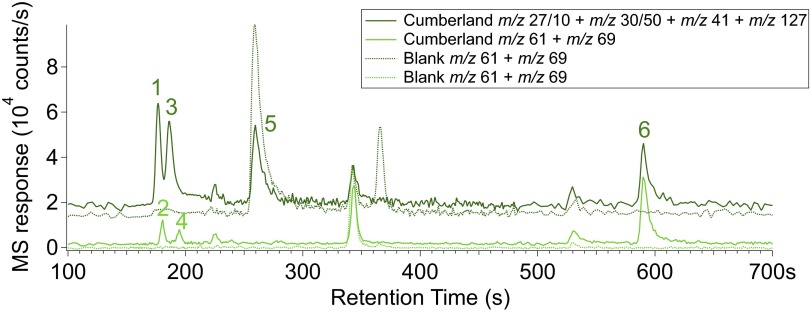Fig. 2.
GC chromatograms of CB-5 sample with m/z corresponding to the base or diagnostic peak of each of the N-bearing compounds identified. 1, NO (m/z 30); 2, TFA (m/z 69); 3, HCN (m/z 27); 4, ClCN (m/z 61); 5, CH3CN (m/z 41); 6, TFMA (m/z 127). Division factors were applied to the most abundant compounds for scaling: factor 10 for m/z 27 and factor 50 for m/z 30. None of the chosen masses contribute to another N-bearing compound identified in each chromatogram. Because of partial coelutions between the first four GC peaks, two separate chromatograms were reconstructed (dark green and light green plain lines). The corresponding dotted lines are the reconstructed chromatograms of the reheated CB-6–residue sample, which has the same GC temperature cut as CB-5 and can thus be considered as a blank. Although acetonitrile (CH3CN) (m/z 41) is detected in the GC, its detection in EGA is complicated by methylpropene, which constitutes the majority of the signal at m/z 41.

